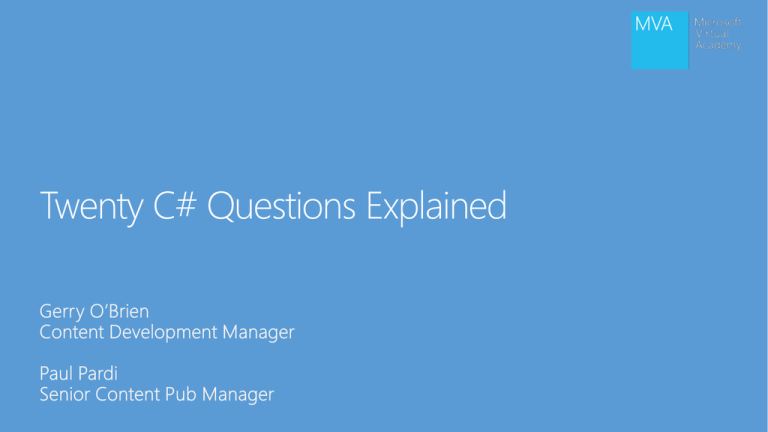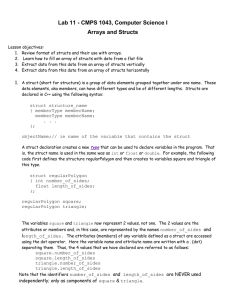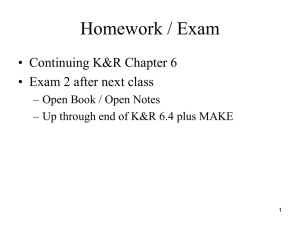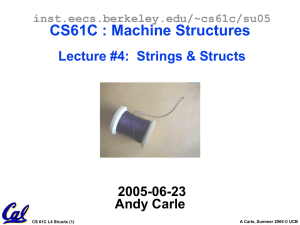
•
– Focused on developer and database platforms
– Content author
•
– Microsoft
– Microsoft Certified Trainer
– Software developer and consultant
– Book and course author
– Visual Basic, C#, Java, Objective-C
– Life-long learner
•
– Lead team of content developers focused on software development
technologies
– Working on internal app development
•
– Managed Windows Store merchandising team for Windows 8
– Managed team and wrote content for Internet Explorer
– Technical trainer and book author
– Published Windows 8 app called Movie Notes
#1: When to Use a struct vs
Class
#6: How would you count
the occurrences of a string
within a string?
#11: Encrypt/Decrypt a
String in .NET
#16: How do I Make a Texbox
that Only Accepts Numbers?
#2: How Does One Parse
XML Files?
#7: How to Check if a
Number is a Power of 2
#12: How do I Get the
Index of the Current
Iteration of a foreach
Loop?
#17: How do I Round a Decimal
Value to 2 Places for Output?
#3: What is the Difference
between String and string
#8: C# Loop – break vs
continue
#13: How to Get My Own
IP address in C#
#18: Remove Duplicates from
an Array
#4: How do I get the
Application’s Path in a C#
Console App?
#9: Difference Between
abstract and virtual
functions
#14: How do I Calculate
Someone’s Age in C#?
#19: How do I Sort a Dictionary
by Value?
#5: Calling base Constructor
in C#
#10: Difference Between ref
and out Keywords
#15: How do I get the
String Value of an enum?
#20: How Can I Return Multiple
Values From a Function in C#?
•
•
•
•
•
•
•
structs are value types that can contain data and functions
structs are value types and do not require heap allocation.
structs directly store their data in the struct, classes store a reference to a dynamically allocated object.
structs are useful for small data structures
structs can affect performance
Constructors are invoked with the new operator, but that does not allocate memory on the heap
A struct constructor simply returns the struct value itself (typically in a temporary location on the stack),
and this value is then copied as necessary
• With classes, multiple variables may have a reference to the same object
• It is possible for operations on one variable to affect the object referenced by the other variable.
• With structs, the variables each have their own copy of the data, and it is not possible for operations on
one to affect the other.
• structs do not support user-specified inheritance, and they implicitly inherit from type object
©2013 Microsoft Corporation. All rights reserved. Microsoft, Windows, Office, Azure, System Center, Dynamics and other product names are or may be registered trademarks and/or trademarks in the
U.S. and/or other countries. The information herein is for informational purposes only and represents the current view of Microsoft Corporation as of the date of this presentation. Because Microsoft
must respond to changing market conditions, it should not be interpreted to be a commitment on the part of Microsoft, and Microsoft cannot guarantee the accuracy of any information provided after
the date of this presentation. MICROSOFT MAKES NO WARRANTIES, EXPRESS, IMPLIED OR STATUTORY, AS TO THE INFORMATION IN THIS PRESENTATION.











